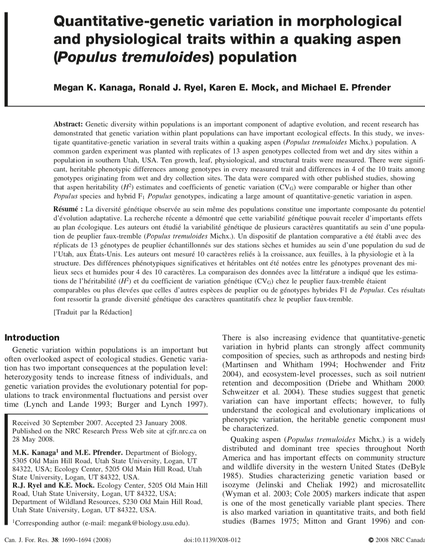
Article
Quantitative-genetic variation in morphological and physiological traits within a quaking aspen (Populus tremuloides) population
Canadian Journal of Forest Research
(2008)
Abstract
Genetic diversity within populations is an important component of adaptive evolution, and recent research has demonstrated that genetic variation within plant populations can have important ecological effects. In this study, we investigate quantitative-genetic variation in several traits within a quaking aspen (Populus tremuloides Michx.) population. A common garden experiment was planted with replicates of 13 aspen genotypes collected from wet and dry sites within a population in southern Utah, USA. Ten growth, leaf, physiological, and structural traits were measured. There were significant, heritable phenotypic differences among genotypes in every measured trait and differences in 4 of the 10 traits among genotypes originating from wet and dry collection sites. The data were compared with other published studies, showing that aspen heritability (H2) estimates and coefficients of genetic variation (CVG) were comparable or higher than other Populus species and hybrid F1 Populus genotypes, indicating a large amount of quantitative-genetic variation in aspen.
Disciplines
Publication Date
2008
DOI
https://doi.org/10.1139/X08-012
Citation Information
Karen E. Mock. "Quantitative-genetic variation in morphological and physiological traits within a quaking aspen (Populus tremuloides) population" Canadian Journal of Forest Research Vol. 38 Iss. 6 (2008) p. 1690 - 1694 Available at: http://works.bepress.com/karen_mock/191/
